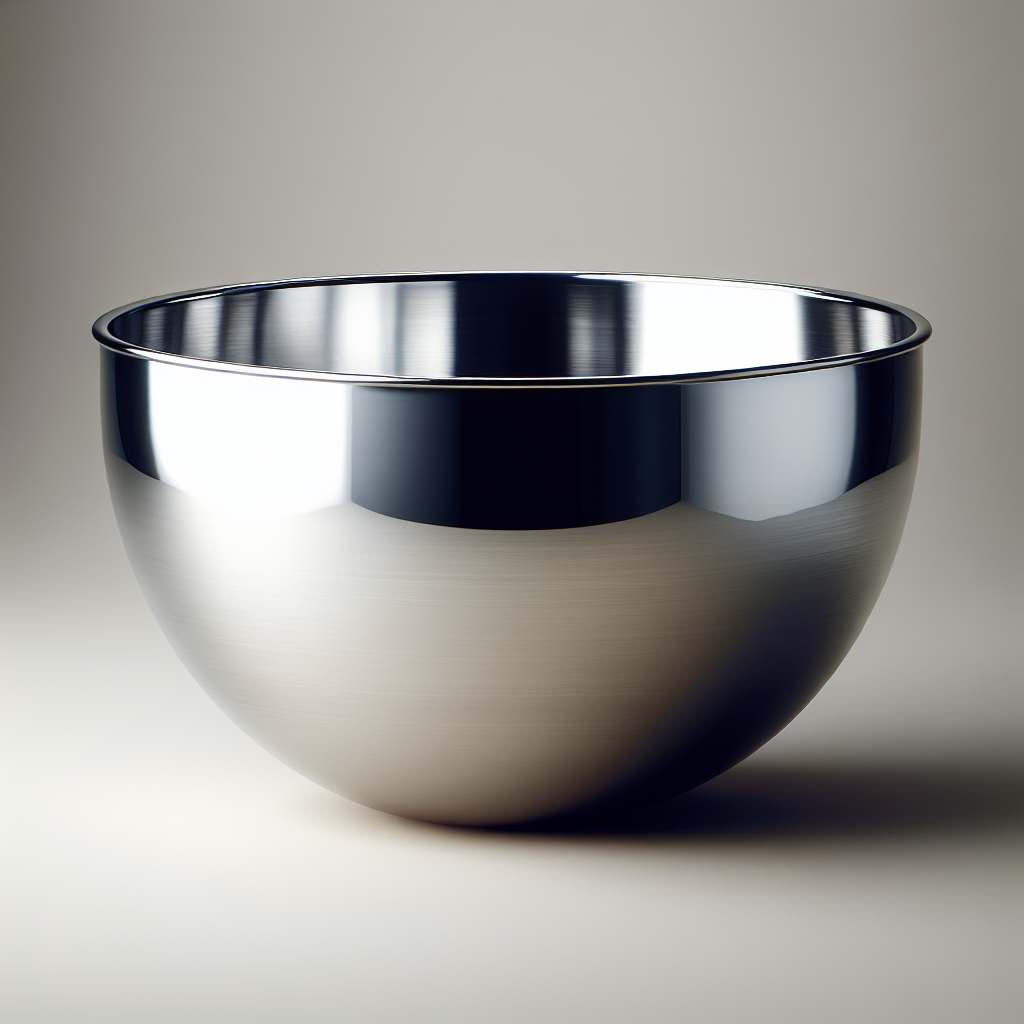In the world of cooking, the humble mixing bowl is an essential tool that often goes overlooked. However, the size and material of your mixing bowl can have a major impact on the outcome of your culinary creations. Whether you’re whipping up a batch of fluffy pancakes or mixing together a rich chocolate cake, understanding the science behind mixing bowl sizes and materials can elevate your cooking experience to a whole new level. Join us as we explore this fascinating topic and discover how to choose the perfect mixing bowl for your culinary needs.

Sizes of Mixing Bowls
Large
Large mixing bowls are the perfect option when you need to prepare a large quantity of ingredients or mixtures. These bowls typically have a capacity of around 5 to 8 quarts, providing ample space for mixing dough, batters, or sauces. They are particularly useful when you’re making big batches of cookies or when you’re working with a large volume of ingredients. Large bowls also come in handy when you need to toss salads or marinate meat.
Medium
Medium-sized mixing bowls are the workhorses of the kitchen. They usually have a capacity of around 3 to 5 quarts, making them versatile and suitable for a wide range of tasks. These bowls are great for whisking eggs, mixing cake batters, or tossing small to medium-sized salads. They strike a balance between the capacity of a large bowl and the convenience of a smaller one, making them an essential tool for any home cook.
Small
Small mixing bowls are ideal for tasks that require precision or when you’re working with limited quantities of ingredients. They typically have a capacity of around 1 to 3 quarts, making them perfect for whisking dressings, beating eggs, or preparing small amounts of sauces. Small bowls are also great for holding pre-measured ingredients, allowing you to keep everything organized and within reach. Don’t underestimate the value of small mixing bowls, as they can make the cooking process much more efficient!
Materials of Mixing Bowls
Glass
Glass mixing bowls are a popular choice for many cooks due to their versatility and practicality. They are transparent, allowing you to see the contents clearly as you work. Glass bowls are also microwave-safe, making them convenient for tasks that require heating or melting ingredients. Additionally, they are resistant to staining and do not retain odors, ensuring that your food tastes fresh each time. However, glass bowls can be heavier and more fragile compared to other materials, so handling them with care is crucial.
Stainless Steel
Stainless steel mixing bowls are known for their durability and resistance to rust and corrosion. They are lightweight, making them easy to handle and maneuver. Stainless steel bowls also have the advantage of being non-reactive, which means they won’t interact with acidic ingredients like vinegar or lemon juice. These bowls are perfect for tasks that require chilling ingredients or whipping up egg whites. However, they can get hot to the touch when used with hot ingredients, so caution is advised.
Plastic
Plastic mixing bowls are lightweight and convenient options for everyday cooking. They are easy to handle, making them ideal for tasks that require a lot of tossing or stirring. Plastic bowls are also less likely to break or shatter compared to glass or ceramic bowls, making them a safer choice when children are involved in the cooking process. However, plastic bowls may stain or retain odors over time, especially when used with strongly-colored or strongly-flavored ingredients. It’s important to choose BPA-free plastic bowls to ensure food safety.
Copper
Copper mixing bowls are the go-to choice for professional bakers and pastry chefs. The copper material is excellent for creating an ideal environment for beating egg whites and achieving maximum volume. Copper bowls are highly conductive, allowing for quick and even distribution of heat. This makes them perfect for tasks that require precise temperatures, such as making meringues or working with sugar syrups. However, copper bowls can be expensive and require regular maintenance to prevent tarnishing and corrosion.
Ceramic
Ceramic mixing bowls are both practical and aesthetically pleasing. They come in a variety of designs and colors, allowing you to choose a bowl that matches your kitchen decor. Ceramic bowls are great for serving food as well since they retain heat, keeping your dishes warm for longer periods. They are also easy to clean and are less likely to stain compared to plastic bowls. However, ceramic bowls can be heavy and more prone to chipping or breaking if mishandled or dropped.

Choosing the Right Size Mixing Bowl
When it comes to choosing the right size mixing bowl, there are a few factors to consider:
Consider the Recipe
Think about the types of recipes you often prepare. If you frequently bake large quantities of cookies or bread, a large mixing bowl may be a good investment. If you mainly cook for a small family or prefer to make single-serve dishes, a medium or small mixing bowl might be more appropriate. Assessing your cooking habits and the types of recipes you enjoy will guide you towards the right size.
Consider the Ingredients
The size of the ingredients you typically work with should also influence your choice of mixing bowl size. For example, if you frequently whisk large amounts of eggs or toss salads with multiple vegetables, a larger bowl may be necessary to prevent overflowing or spilling. On the other hand, if you mainly work with smaller portions or delicate ingredients, a smaller bowl may be more suitable for precise measurements and easy handling.
Consider the Storage Space
As you consider the size of the mixing bowl, don’t forget to think about where you’ll store it in your kitchen. Large mixing bowls take up more space and may not fit comfortably in cabinets or drawers. If you have limited storage space, it might be wise to opt for smaller or stackable bowls that are easier to store.
Special Considerations for Mixing Bowls
Aside from size and material, there are a few other factors to keep in mind when selecting a mixing bowl:
Heat Conductivity
Some materials, like copper and glass, have excellent heat conductivity. This means that they will heat up or cool down more quickly when exposed to hot or cold ingredients. If you frequently work with temperature-sensitive recipes, such as candy-making or delicate pastry doughs, choosing a mixing bowl with good heat conductivity can make a significant difference in achieving the desired results.
Weight
Consider the weight of the mixing bowl, especially if you have any physical limitations or prefer lightweight kitchen tools. Stainless steel and plastic bowls are generally lighter, making them easier to handle and maneuver. Glass and ceramic bowls tend to be heavier, which can be a consideration if you’ll be lifting and pouring mixtures frequently.
Durability
Think about the longevity and durability of the mixing bowl. Stainless steel and glass bowls are known for their durability, while plastic and ceramic bowls can be more prone to wear and tear. Choosing a mixing bowl made from high-quality materials will ensure that it lasts for years to come and withstands the rigors of everyday cooking.

Conclusion
Choosing the right mixing bowl size and material is an important decision for any home cook. The size of the bowl should be based on your cooking habits, the types of recipes you prepare, and the amount of storage space available. The material of the bowl should be chosen considering factors such as heat conductivity, weight, and durability. Taking these factors into account will help you find the perfect mixing bowl that will enhance your culinary skills and make your cooking experience even more enjoyable. Happy mixing!

